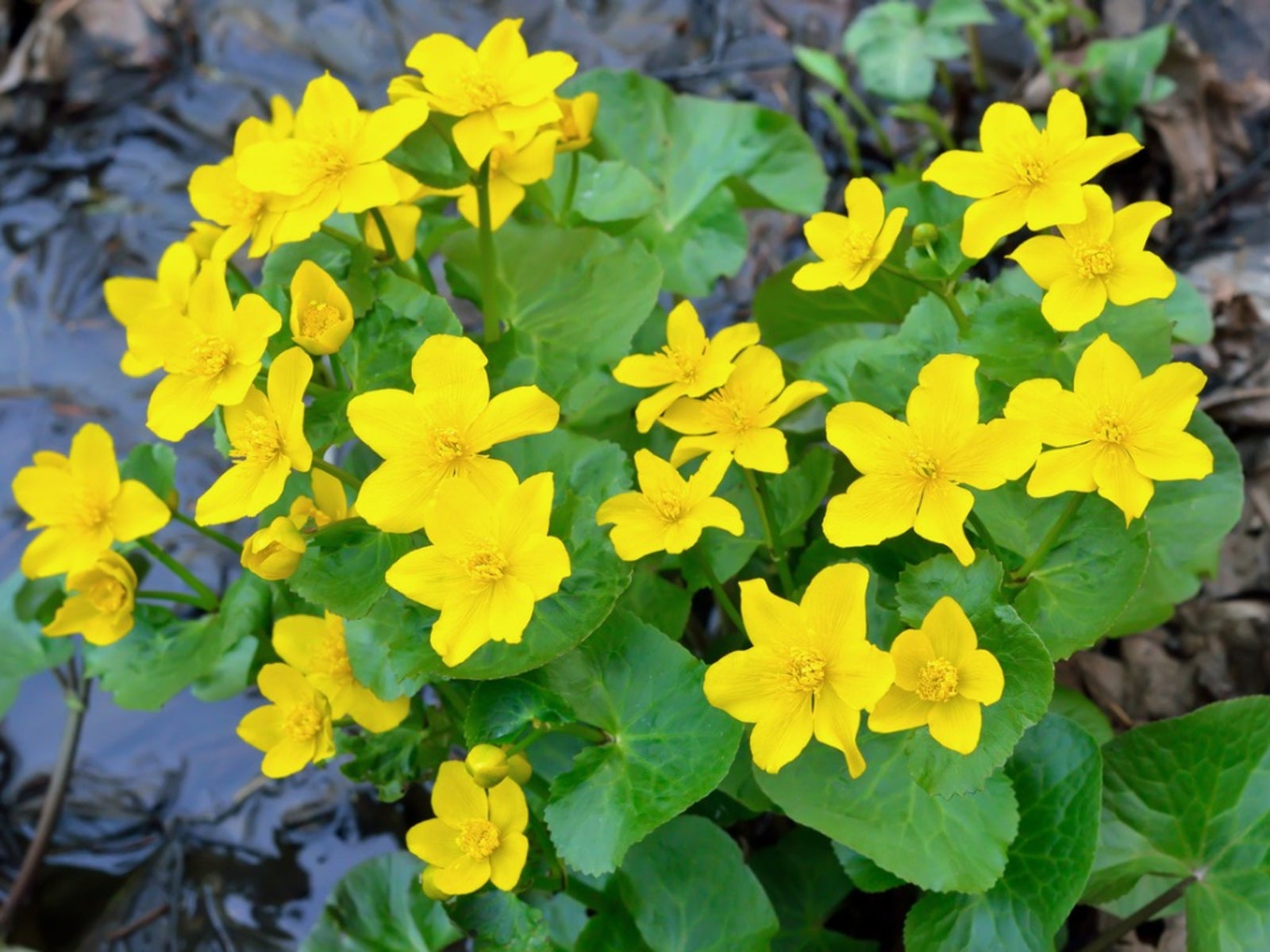Caltha Cowslip Info: Tips For Growing Marsh Marigold Plants
The perky, yellow, buttercup-like blossoms that appear in moist woodlands and boggy areas are probably marsh marigolds, or Caltha cowslips. They don't need your care but are just there to enjoy.


Gardeners living in mountainous areas of the upper southeast and lower Midwestern states may notice perky, yellow buttercup-like blossoms springing up from April to June in moist woodlands and boggy areas. Likely you are seeing marsh marigolds, which may lead you to ask, exactly what are marsh marigolds?
What are Marsh Marigolds?
Not related to traditional garden marigolds, the answer is Caltha cowslip, or in botanical terms, Caltha palustris, a member of the Ranunculaceae family.
These are herbaceous perennial wildflowers or herbs, but not in the traditional sense. The leaves and buds of growing marsh marigold plants are poisonous unless they are cooked with several coverings of water. Legends say they add the yellow color to butter, as they are a favorite of grazing cows.
Caltha cowslip is a 1 to 2 foot (31-61 cm.) perennial with a mounding habit and is a succulent. The flower color of growing marsh marigold plants is on its sepals, as the plant has no petals. Sepals are borne on waxy and attractive green foliage, which may be heart-shaped, kidney-shaped, or rounded.
A smaller species, the floating marsh marigold (C. natans), grows in more northern areas and has sepals of white or pink. This species has a hollow stem which floats on water. These plants make great additions to the moist garden, and as a bonus Caltha cowslip attracts butterflies and hummingbirds.
How and Where to Grow Marsh Marigolds
Growing marsh marigold plants in moist woodlands and near ponds is simple and they need almost no care at all.
The Caltha cowslip basically takes care of itself and is suited only to moist areas with well-draining soil. In fact, any moist or boggy area is appropriate for growing marsh marigolds.
Sign up for the Gardening Know How newsletter today and receive a free copy of our e-book "How to Grow Delicious Tomatoes".
When you are growing marsh marigold plants, don't let the soil dry out. They will survive drought conditions but go dormant and lose their leaves.
Seeds for propagation of the Caltha cowslip form near the end of the bloom period. These can be collected and should be planted when ripe.
Enjoy these naturally growing, bright pops of color in your woodland or natural areas.

Becca Badgett was a regular contributor to Gardening Know How for ten years. Co-author of the book How to Grow an EMERGENCY Garden, Becca specializes in succulent and cactus gardening.